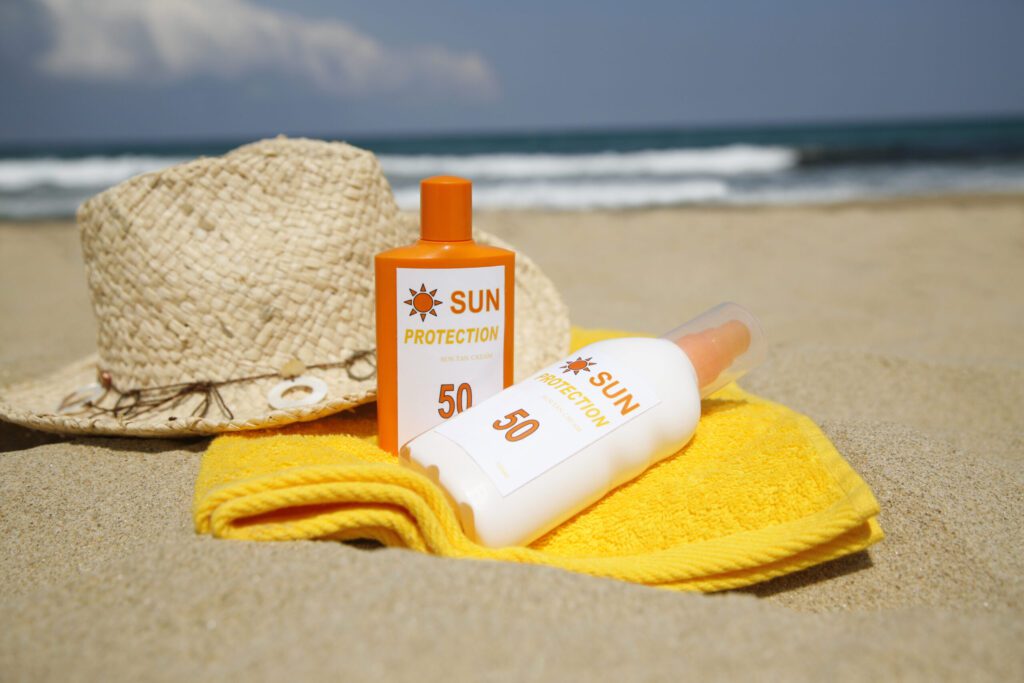Area Doctors Help Us Clear Up Common Summer Skin Care Myths
by TERESA SCHIFFER
Summer is officially here and it’s time to catch some rays! Here in Central Florida, we don’t really need to do much in order to get our daily dose of vitamin D from the sun, but many folks still enjoy heading out to the beach or hanging poolside to lounge and soak up some summer sun. Despite the pleasure of just taking it easy and working on that golden tan, it’s important to remember that sun damage can be a major health risk, so be smart and protect yourself. Some local physicians have offered to clarify some of the myths that commonly make the rounds at this time of year regarding protection against the harmful effects of sun exposure.
Myth 1: The higher the SPF, the better the protection.
It’s pretty well known by this point that we should all be wearing sunscreen on any exposed skin on a regular basis year-round, especially in Florida. Doctors generally recommend a minimum SPF (Sun Protection Factor) of 15, though many would increase that to an SPF 30. The SPF indicates how much longer a person can tolerate the sun before becoming burned. For example, if you typically burn after 30 minutes, an SPF 15 would protect you for 15 times 30 minutes, or 450 minutes (7.5 hours). Of course, you would need to reapply protection several times within that time frame, but that’s basically how it works. So does that mean that the higher the SPF, the more you are protected?
“Yes, but the increased protection is only minimally more effective,” Dr. Andrea Hastings says. Hastings is a primary care physician with BayCare Medical Group who practices in Lakeland. She continues, “When applied in a sufficient amount, the amount of UVB radiation absorbed by SPF 15, 30, and 50 sunscreen products is 93, 97, and 98 percent, respectively.” Since no sunscreen is going to provide 100 percent protection, the increase beyond SPF 30 or 50 is negligible.
Your level of protection can also be affected by how you apply the sunscreen.
“Proper application is key to getting the desired SPF protection,” Lakeside Dermatology’s Dr. Alex Kennon says. “Studies have shown subjects only applied 25-75% of the amount required to achieve the rated SPF, thus decreasing the efficacy. It requires 1-1.5 ounces (2-3 tablespoons) of sunscreen to cover the average body to achieve the rated SPF.”
Don’t forget to reapply! According to Kennon, you should reapply every two hours, or every 40 minutes if you are sweating or swimming.
Myth 2: You only need to wear sunscreen when you’re outside.
If you assume that you only need to apply sunscreen when you plan on being active outside, think again! Board-certified dermatologist Dr. Pamela Sakalosky from Lakeland’s Watson Clinic Bella Vista Building clarifies this misconception, “Whether spending time inside or out, wearing sunscreen is one of the most important things you can do for your skin. The sun’s rays can pass through the glass windows of your home and car and cause premature aging and wrinkling of the skin.”
Myth 3: If your skin tans as opposed to burning, you don’t need to be concerned about skin cancer.
If you’re a real sun worshipper, you might not like this next one very much. “Tan skin is damaged skin,” Kennon explains. He goes on to explain why tanning isn’t such a great idea, health-wise, “Tanning is a result of your skin’s attempt to protect itself from UV radiation and DNA damage, which can potentially lead to skin cancer. The melanin produced by tanning acts as an umbrella over the nucleus of cells trying to shield DNA from damage, but it is imperfect and some UV radiation does get through.”
Sakalosky agrees. “There is no such thing as a healthy tan.”
Myth 4: Using a daily moisturizer with sunscreen in the morning offers ideal protection for your face.
Using a daily moisturizer with sunscreen on your face can provide some protection, but don’t be lulled into a false sense of safety if you just apply only in the morning and then go about your day. “A daily moisturizer with sunscreen is a good start,” Kennon says, “but you want to make sure it is at least SPF 30. Broad-brimmed hats, UPF (Ultraviolet Protection Factor) protective clothing, and makeup with sunscreen provide additional protection.” If makeup isn’t really your thing, be sure to reapply your protective moisturizer every couple of hours for maximum effectiveness.
Myth 5: You can’t use retinoids or retinol in the summer because they can cause sun sensitivity.
Retinols and retinoids have increased in popularity in recent years as means of preventing and reducing fine lines, wrinkles, and dull skin, but there are some precautions that should be minded.
“Retinols and retinoids can be continued in the summer as long as one is diligent about sun protection,” Sakalosky says. “Since retinol breaks down in sunlight and makes the skin more prone to sun damage, make sure you apply it at night and go heavy on the sunscreen the next day.”
The bottom line is, enjoy the summer sunshine, but be wise about it. Cover up when you can, and always use sunscreen, whether you plan on spending time outdoors or not. Damage from ultraviolet radiation doesn’t go away, so protect yourself from burning and minimize tanning. Skin cancer is nothing to scoff at, so any time you notice alterations in your skin, such as new growths or changes to existing moles, freckles, or birthmarks, contact your primary care physician or dermatologist to get it checked without delay.
